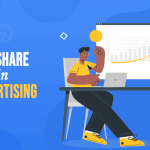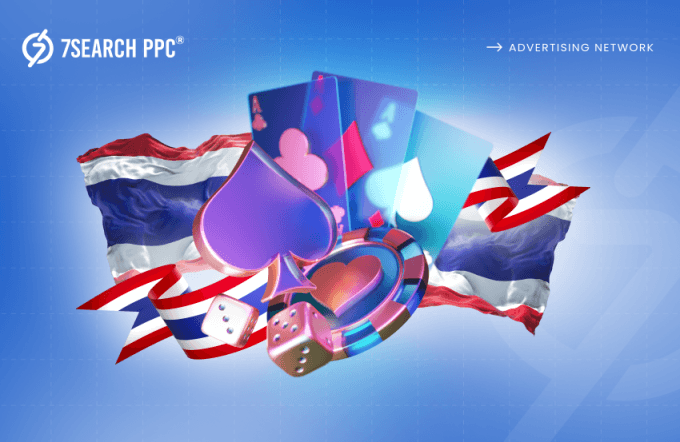Advertisement alert! Hey gorgeous, is your skin ready for this summer to fight with tanning? You need an “X’ cream that totally blocks UV rays and gives you a glow that you won’t need makeup to achieve. This is one example, but on the internet, these ads are overloaded with flawless promises that hit the mind and the emotions of the viewer. But do you know what we call this type of advertising? It’s called persuasive advertising.
In this advertising, advertisers use all tactics that appeal to desires and create a sense of urgency to persuade consumers to buy. Now, you will realize that you are also persuaded by some ads without even realizing it. Not only you, but we all fall under the spell of these persuasive tactics.
Now, come to the main point: Are you happy with the performance of your online ads, or have you ever felt like your ads are not getting the attention they deserve? In today’s crowded market, it’s important to cut through the noise and grab attention effectively.
Persuasive ads are about understanding your audience’s needs and desires and creating a connection with your product. It’s not about forcing your audience to buy something but about creating a narrative that resonates with them.
Ready to create ads that really work? Let’s explore powerful techniques and real-world examples to help you become a master of persuasive advertising.
Persuasive Advertising: The Why Behind the Buy
Digital advertising bridges the gap between advertisers and viewers, allowing advertisers to easily showcase the positive side of their offerings. Here, the positive side means that the quality of the product, the benefits it provides, and its unique features are highlighted to attract potential customers effectively.
However, the competition is getting fierce with each passing day, so highlighting these positive sides is not so effective anymore. As an advertiser, you need a technique that makes a special connection with your audience, and this can be done through persuasive advertising.
It is a marketing technique used to persuade viewers to buy a particular product or service. It goes beyond merely providing information about the features and instead focuses on tapping into their emotions, desires, and motivations.
It utilizes techniques such as humor, nostalgia, or social proof to create a positive association with the product. It emphasizes the benefits the product offers and positions it as the solution to the consumer’s problems. Ultimately, the goal is to prompt a desired action, such as making a purchase.
Why Persuasive Advertising is Important: Let the Data Speak
Persuasive ads play a crucial role in influencing consumer behavior and driving business success. Here’s how the data supports its importance:
- According to Nielsen, ads that evoke emotions perform 11% better than those that don’t. This is because emotions play a powerful role in influencing our memory and decision-making abilities.
- A study by Nielsen found that 92% of consumers rely on recommendations from contacts (friends, family) more than any other type of advertising. Testimonials, reviews, and endorsements from influencers are effective ways to use social proof to shape consumer views and boost sales.
- A study conducted by the University of Maryland revealed that time-limited offers could increase sales by up to 25%. This is due to the fact that scarcity induces a fear of missing out, prompting consumers to take action swiftly before the opportunity vanishes.
- Research from the University of Pennsylvania shows that having an expert endorse a product can make ads 15% more persuasive. That’s why brands frequently team up with experts, celebrities, or influencers to promote their offerings.
- In today’s digital world, using personalized data has become essential for persuasive advertising. According to a study by Epsilon, emails customized to individuals can result in transaction rates that are six times higher compared to generic emails. This shows how tailoring messages can greatly boost engagement and sales.
Key Categories of Persuasive Advertising Techniques
Persuasive ad techniques typically fall into several key categories. Each is designed to influence the audience in different ways. Here are some of the main categories:
Ethos
The concept of ethos focuses on building credibility and trust. Advertisers who use ethos aim to make you believe that they are a trustworthy source of information and that their product or service is worthy of your consideration. They may achieve this by including endorsements from experts or celebrities, highlighting any awards or certifications, or showcasing a strong brand reputation.
For instance, you might see a commercial for a laundry detergent featuring a scientist in a lab coat explaining how their formula cleans better. That’s how ethos works.
Logos
Logos use logic and reason to convince consumers. Advertisers rely on facts, statistics, and data to back their claims about a product’s advantages. This method helps consumers to make informed decisions based on evidence rather than just emotions.
For instance, an advertisement for a new car might highlight its superior mileage through statistics and comparisons with similar vehicles. This is an example of using logos to convince consumers of the car’s efficiency.
Pathos
Pathos is a persuasive technique that targets the emotional side of consumers. Advertisers use pathos to evoke emotions such as happiness, sadness, fear, or desire in order to influence behavior. They may accomplish this through powerful imagery, music, storytelling, or humor to create an emotional bond with the audience.
For instance, a charity ad uses emotional visuals to show the impact of a donation on a child’s life. That ad uses pathos to tug at your heartstrings and inspire you to donate to a good cause.
Persuasive Advertising vs Informative Advertising: Are They Similar?
They both run on different roads, but their destination is the same. It means that they both aim to attract consumers’ attention and drive sales, but they do it in different ways:
Persuasive Ads
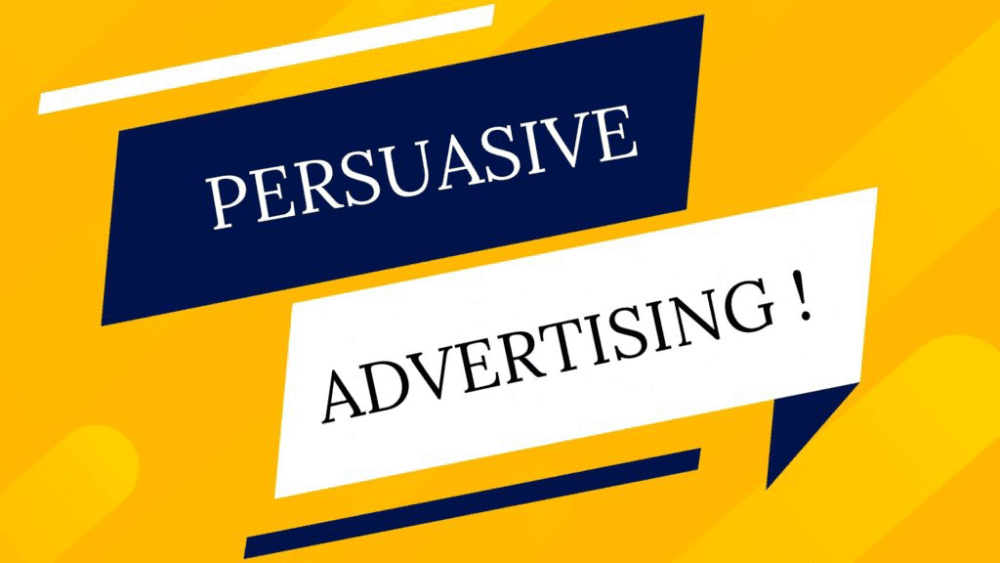
- Purpose- It aims to influence consumer behavior by creating a desire for a product or service. It often emphasizes emotional appeal, brand image, and unique selling propositions to convince consumers to buy.
- Content- It showcases what makes the product special and uses emotional triggers like happiness, humor, or fear of missing out. Advertising psychology often uses reviews, recommendations, and memorable phrases to build an emotional bond.
- Approach- It creates a sense of urgency or exclusivity. It uses strong visuals, catchy slogans, and storytelling to engage with the audience on an emotional level.
Informative Ads
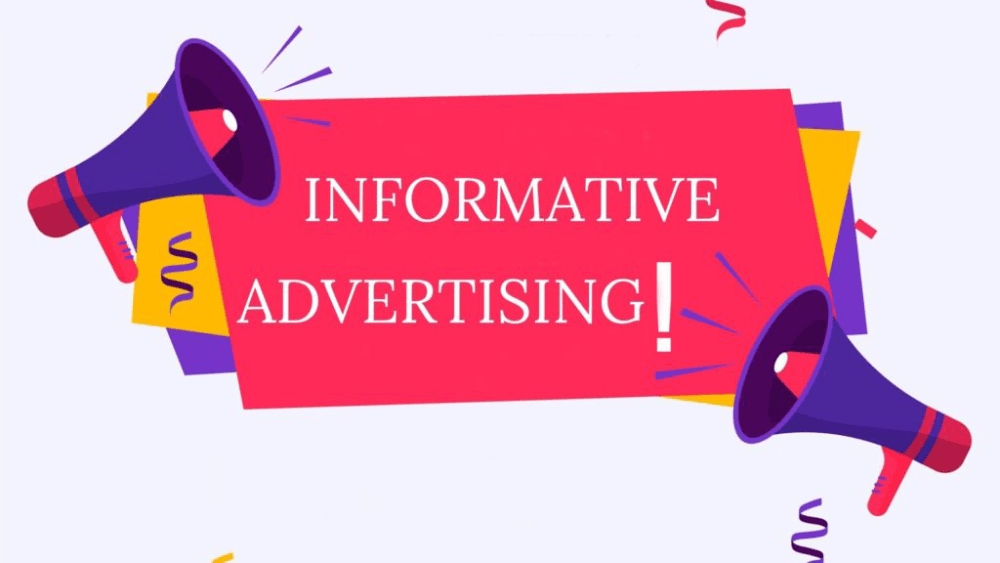
- Purpose- It aims to educate consumers about what a product or service can do, including its benefits and how it can be used. The main aim of informative ads is to give information that helps consumers make smart choices.
- Content- It focuses on presenting facts, features, specifications, and demonstrations. It explains how a product works and compares it to competitors.
- Approach- It presents information clearly and concisely, using statistics, data visualizations, and expert opinions to establish credibility.
Persuasive and informative advertising, despite their different approaches, share the common goal of influencing consumer behavior. Persuasive ads aim to prompt immediate action, while informative ads build trust in the brand for future decisions. Both types of ads share information about a brand, emphasizing features, benefits, or solutions to achieve their goals.
Effective Techniques for Persuasive Advertising
Effective advertising depends on persuasion to guide potential customers to your products or services. Here are some key techniques to consider:
Scarcity Principle
This technique creates a sense of urgency by implying limited availability of a product or service. It taps into the fear of missing out (FOMO) and encourages consumers to act quickly to secure their purchase before it’s gone.
Examples of this technique include “Limited time offer!” or “Only 7 left in stock!” By highlighting scarcity, advertisers nudge consumers to make a quick decision, bypassing their user evaluation process.
Bandwagon Appeal
This technique utilizes the power of social influence. It highlights the popularity of a product or service, suggesting that everyone else is using it. This creates a sense of conformity and encourages consumers to join the crowd.
Phrases like “Millions trust this tea brand!” or “The no.1 iGaming platform!” are classic examples of bandwagon appeals. By emphasizing widespread popularity, advertisers make consumers feel they’ll be missing out if they don’t join in.
The Carrot
“The Carrot? You might be surprised to find this name on a list of techniques. Just like a rabbit is attracted after seeing a carrot in front of it, consumers are also enticed by appealing rewards. This technique focuses on the perks and rewards of using a product or service. It emphasizes the positive outcomes consumers can achieve, such as happiness, success, or social acceptance.
Examples of this technique include “Look your best!” or “Get the job done faster!” By showcasing the positive aspects of using the product, advertisers paint a desirable picture that entices consumers to make a purchase.
Sense of Control
In advertising, it’s important to recognize people’s desire for autonomy, as shown in a study by Rutgers University psychologists. When creating ads, giving the audience the feeling of being in control and able to make choices can greatly improve engagement. This can be done by using language that suggests freedom and autonomy, like “Feel free to choose” or “No pressure to buy.”
By offering options instead of giving direct orders, advertisers show respect for the audience’s decision-making process.
This not only improves how the product or service is perceived but also helps build a stronger connection with potential customers who feel they are making informed choices based on their preferences.
Social Proof
This technique establishes trust and credibility by utilizing the power of the crowd. It is based on the idea that people are more likely to show trust in products or services that have been endorsed by others. Advertisers use testimonials from satisfied customers, celebrity endorsements, or statistics on product usage to create social proof.
By demonstrating that others have made a positive choice, they influence consumers to do the same.
For example, an ad featuring positive reviews or a celebrity promoting a new fitness program can make you feel more confident about trying the program yourself.
Examples of Persuasive Advertising that Inspire Action
We have researched some examples of persuasive ad campaigns that effectively inspire action:
StreetEasy
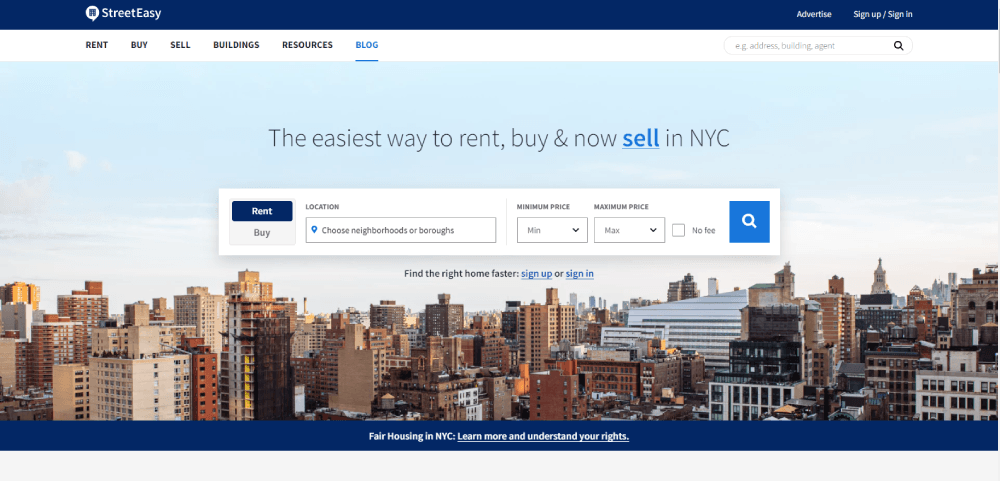
StreetEasy understands the frustration of apartment hunting. Their ads likely focus on the ease of their platform and the comprehensiveness of their listings. They use the slogan”The Dream Is Different Here” in their persuasive advertising to catch the attention of the people.
By highlighting the time-saving and frustration-free aspects of its service, StreetEasy positions itself as the ideal solution for stressed apartment seekers.
Apple

Apple has a long history of persuasive advertising. Its ads often focus on innovation and user experience, portraying Apple products as sleek and essential for a modern lifestyle. Apple uses catchy slogans like “Think Different” to create a sense of innovation and creativity that sets it apart from competitors.
By emphasizing its cutting-edge design and user-friendly features, Apple creates a perception of its products as superior and desirable.
Heinz Ketchup
Imagine fries without tangy, delicious ketchup. Heinz capitalizes on this fear of missing out (FOMO) in their ads. They position themselves as the trusted brand loved by America for over 150 years, bringing families together over meals.
Their secret blend of spices and vine-ripened tomatoes promises a blast of flavor in every bite. The message is clear: Heinz elevates your food, so don’t settle for less!
Airbnb
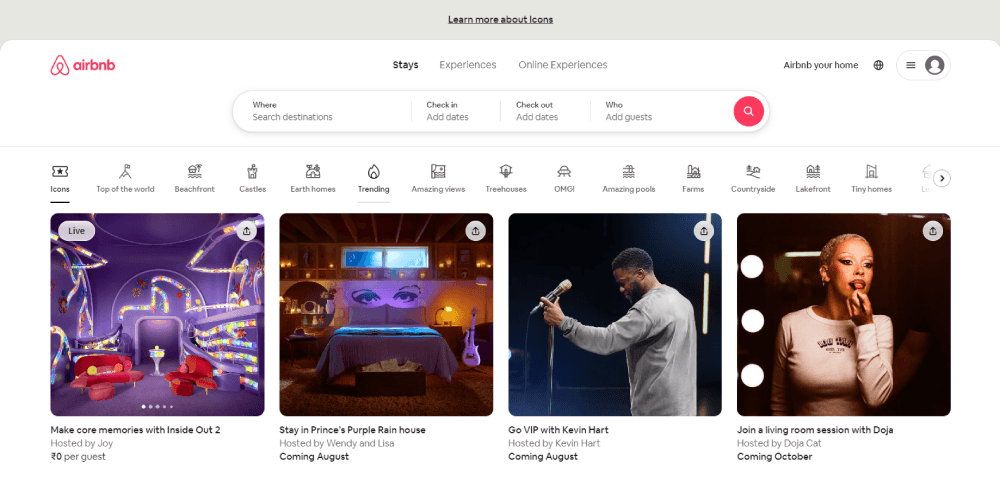
Are you tired of staying in ordinary hotels? Airbnb caters to our sense of adventure. Its persuasive advertising showcases one-of-a-kind travel experiences. Their ads can make you imagine staying in castles, apartments, or local homes, fully immersing yourself in different cultures and creating unforgettable memories.
From budget-friendly studios to luxury villas, Airbnb is designed for everyone. Their call to action is to break away from the ordinary and “uncover the magic of Airbnb” for your next adventure.
Conclusion
In today’s crowded marketplace, it’s essential to cut through the noise and grab attention. Persuasive advertising techniques can be a smart strategy to achieve this. By grasping your audience’s needs and desires, you can generate a message that resonates with them and positions your product as the solution.
Remember, the goal is to establish a bond, not just highlight features. Don’t be afraid to experiment with different techniques, like social proof, the carrot, or a sense of urgency, to see what resonates with your audience. Effective persuasive advertising can turn viewers into loyal customers. Invest in persuasive ads today and watch your brand rise above the competition.
Frequently Asked Questions (FAQs)
What is persuasive advertising?
Ans. Persuasive advertising is an advertising strategy that convinces viewers to buy a product or service. It goes beyond listing features and instead focuses on emotions and desires.
Why is persuasive advertising important?
Ans. It influences buying decisions and drives sales. Ads with emotions perform better, and social proof (recommendations from others) builds trust.
Is persuasive advertising manipulative?
Ans. Not necessarily. It’s about understanding what motivates people and using that to create a compelling message.
Is persuasive advertising a good fit for all businesses?
Ans. Persuasive advertising can be effective for most businesses, but the best approach depends on your target audience and product/service.
What are some key techniques of persuasive advertising?
Ans. Scarcity, Bandwagon Appeal, The Carrot, Sense Of Control, and Social Proof are some key techniques of persuasive advertising.



